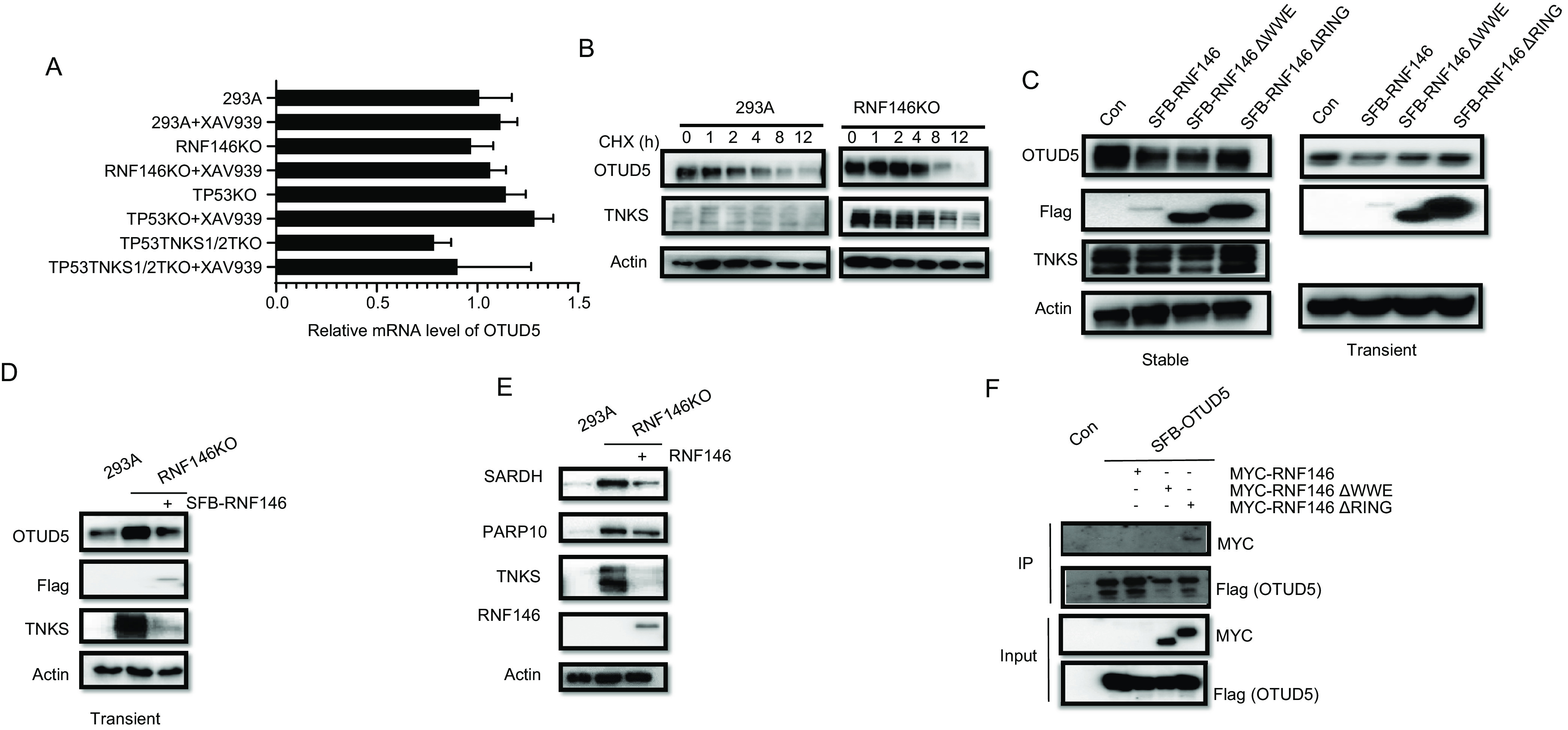Fig. 5.

OTUD5 is a potential TNKS-independent target of RNF146. A, mRNA levels of OTUD5 were assessed by real-time qPCR after the indicated treatments and are presented as means ± S.E. of 3 biological replicates. B, Immunoblot assay of whole cell extracts for OTUD5 and TNKS expression was conducted in 293A and RNF146 KO cells treated with 50 µg/ml cycloheximide for the indicated times. C, Immunoblot assay of 293A cells with overexpression of N-SFB-RNF146, N-SFB-RNF146 ΔWWE, or N-SFB-RNF146 ΔRING with the indicated antibody (left: stable overexpression; right: transient overexpression). D, Reintroduction of N-SFB-RNF146 into RNF146 KO cells was validated by immunoblotting with the indicated antibodies. E, Reintroduction of RNF146 could rescue the overexpression of SARDH and PARP10 in RNF146 KO cells. F, Co-immunoprecipitation of OTUD5 with RNF146. RNF146 and RNF146 mutants were fused with N-terminal MYC tags and transiently expressed in 293T cells, whereas OTUD5 with N-terminal S protein, Flag, streptavidin-binding peptide (SFB) tag. We harvested cells after 24 h, pulled down the overexpressed proteins with streptavidin beads, and analyzed them via Western blot analysis.
